
Maize is an important crop in many parts of the world, and its success largely depends on proper land preparation. To achieve optimal maize yields, farmers need to know the essential techniques for preparing their land before planting. This article will cover the various stages involved in maize land preparation, from soil analysis and preparation to planting. By following the guidelines outlined in this article, farmers can ensure that their maize crops are healthy and productive, leading to increased yields and profits.
Soil is the foundation of successful maize cultivation. The first consideration is soil type, which can greatly affect your crop’s health and productivity. Different maize varieties thrive in various soil types, so understanding your soil is essential. Loamy soils, which combine sand, silt, and clay, are often ideal for maize. Conduct a soil test to determine your soil’s pH, nutrient levels, and organic matter content. This information is invaluable for tailoring your land preparation and fertilization strategies to your soil’s unique characteristics.
The lay of the land influences water drainage, erosion control, and even sunlight exposure. Assess your field’s topography to identify potential challenges and opportunities. Maize can be sensitive to waterlogged or steeply sloping areas. Proper land preparation and contouring may be necessary to mitigate these issues.
Climatic conditions are a fundamental factor in maize land preparation. Maize is sensitive to temperature, rainfall, and sunlight. Consider your local climate, particularly the length of the growing season and average temperatures. This information will dictate your planting schedule. Maize requires warm soil for successful germination, so be sure to time your land preparation accordingly. Additionally, if you’re in an area prone to drought, water management techniques like irrigation should be part of your land preparation strategy.
Water is life for maize, and its availability is a primary concern. Assess the water resources on your land, such as natural water sources or irrigation options. Maize cultivation typically requires consistent moisture, particularly during critical growth stages. Adequate water availability ensures that your crop won’t suffer from drought stress, leading to higher yields and healthier plants. Implementing efficient irrigation systems can be a game-changer, ensuring your maize receives the water it needs precisely when it needs it.

As we approach planting, we are also approaching one of the largest expenditures of the year for most growers – fertilizer expenditure. Getting the right amount of fertilizer on to maximize the return on investment is crucial, and depends on two key factors, yield potential and what is already in the soil. Yield potential and crop requirement are a matter of conjecture and amount to a guess at the rainfall that is likely to follow.
Knowing what is in the soil on the other hand does not need to be guess work, but should be the result of a soil test. A reminder of the basics:
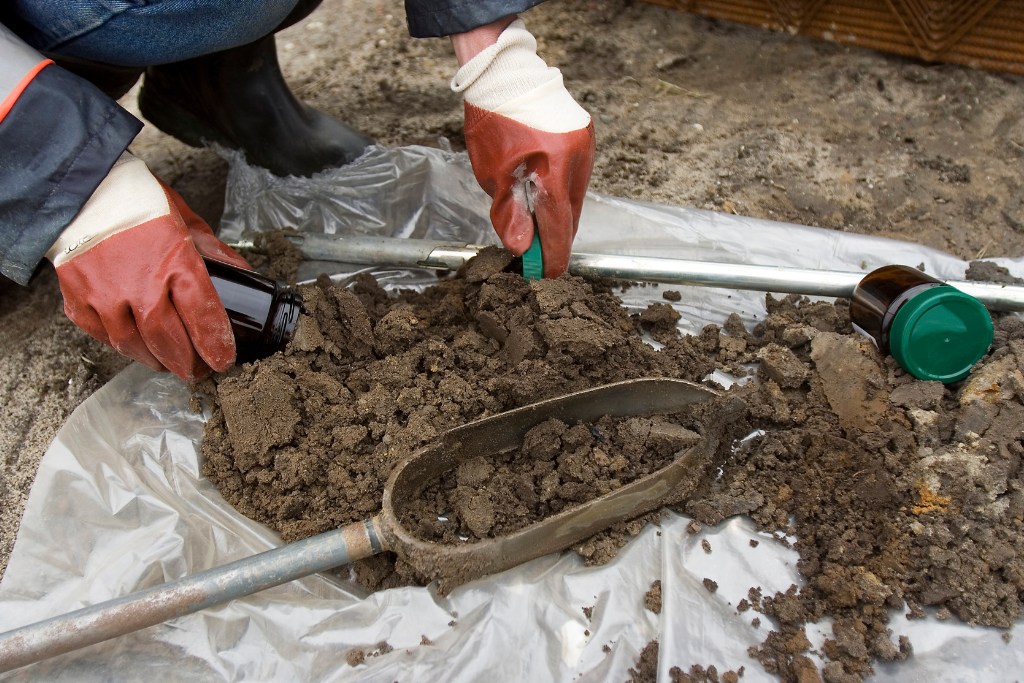
Farmers can obtain crucial information about the soil pH and the concentration of vital nutrients like potassium, phosphorus, nitrogen, calcium, magnesium and others through soil testing. This knowledge can help farmers avoid unnecessary expenses by preventing the use of excessive fertilizers that are not required for their fields.
The sample result is only as good as the quality of the sample taken and delivered to the laboratory. Sample fields in a ‘W’ pattern across fields in order to take a representative sample across the whole field. This should be made up of at least 20 sub-samples from points along the ‘W’.
If in doubt, sample any different soil types or areas of the field separately. This might include:
In no-till systems, there can be less vertical soil movement, particularly in the early days before earthworms and other soil micro fauna increase and begin to move the soil. This can lead to distinct layers in the soil including:
Much research has been carried out on how to remedy these effects by deep P placement and regular liming, but the most important factor is to understand what is happening in your soils by testing. The below graph from North Dakota State University shows particularly well how P stratification can occur in the soil.
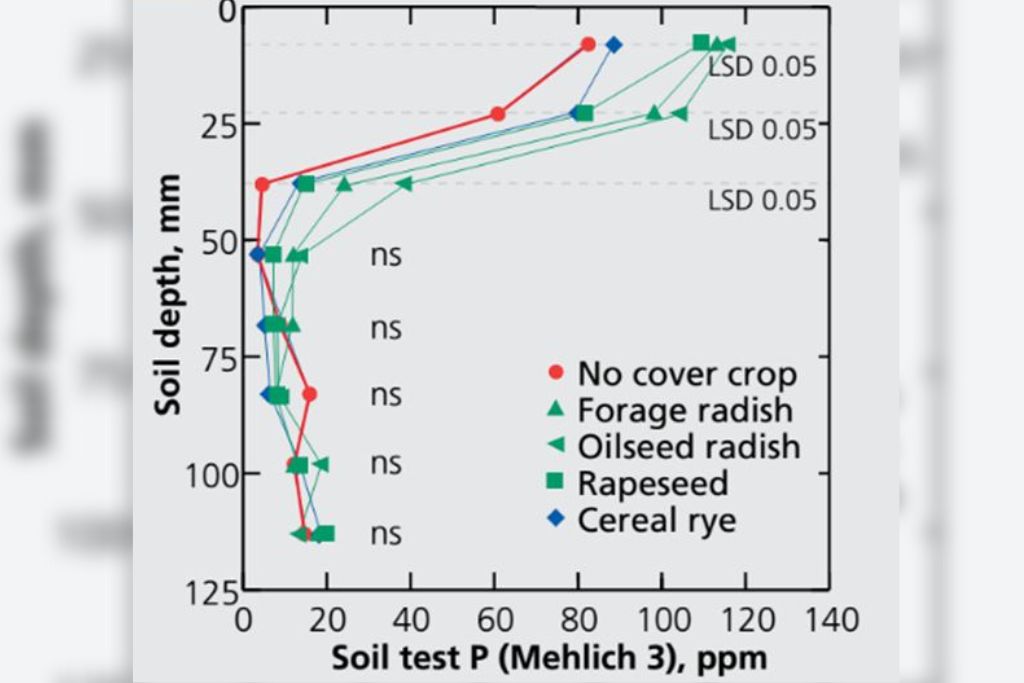
Phosphorus stratification refers to a situation where there is an excess of phosphorus in the top layer of soil and a deficiency of phosphorus in the soil layer that is deeper than 6 inches.This can occur as a result of long-term use of phosphorus fertilizers, which leads to the accumulation of phosphorus in the topsoil. This can cause problems as plant roots may not be able to access the lower levels of phosphorus in the subsoil, leading to decreased yields and overall plant health.
The suggestion here is that a mix of cover crops (in a corn – soybean rotation) actually increase stratification by bringing P up from depth (thanks to varied and deeper rooting). But the general picture is clear; in long term no till soils the P available in a dry season at depth can be markedly reduced.
This debate has been raging ever since the introduction of precision farming and is a subject that most agronomists and farmers have a strong opinion on! My belief is that neither approach is too far wrong. Grid samples are arguably easier to administer, whereas zones allow aspects of local knowledge to be brought into the sampling. The important point is to A) do something, B) review the results, and C) to look at where the gaps in knowledge are and sample further if necessary.
| Zone Soil Sampling | Grid Soil Sampling | |
| Advantages | 1) Can more accurately reflect knowledge of the field and other factors such as soil type and topography 2) Provided zones are well selected it can reduce the number of samples required. 3) Zones are useful for other management tools such as variable rate seed and growth regulators, as well as fertilizer. | 1) Easy to administer and fast On a new farm it can be a better option until more knowledge is accumulated. 2) Avoids incorrect assumptions about zones within fields and is arguably the more impartial method. 3) Intensive grid sampling is more likely to identify low pH areas. |
| Disadvantages | 1) Can over complicate sampling with several ‘layers’ of information 2)Can be highly misleading if zones are poorly selected. | 1) Can fail to provide enough detail in small, specific areas 2) Highly variable fields may need samples every 0.5 ha |
Typically after soil testing and analysis, one usually receives soil pre-planting, planting and top-dressing soil correction recommendations involving several fertilizer and liming products.
For well over a hundred years we have known the importance of getting the pH right before any other fertilizer inputs or crop protection measures. Maintaining a correct soil pH drastically improves the availability of many nutrients. The classic graphic below reminds us that here in Kenya for example where we are usually short of P, Mg, and S, a low pH is costing us further in reduced nutrient availability.
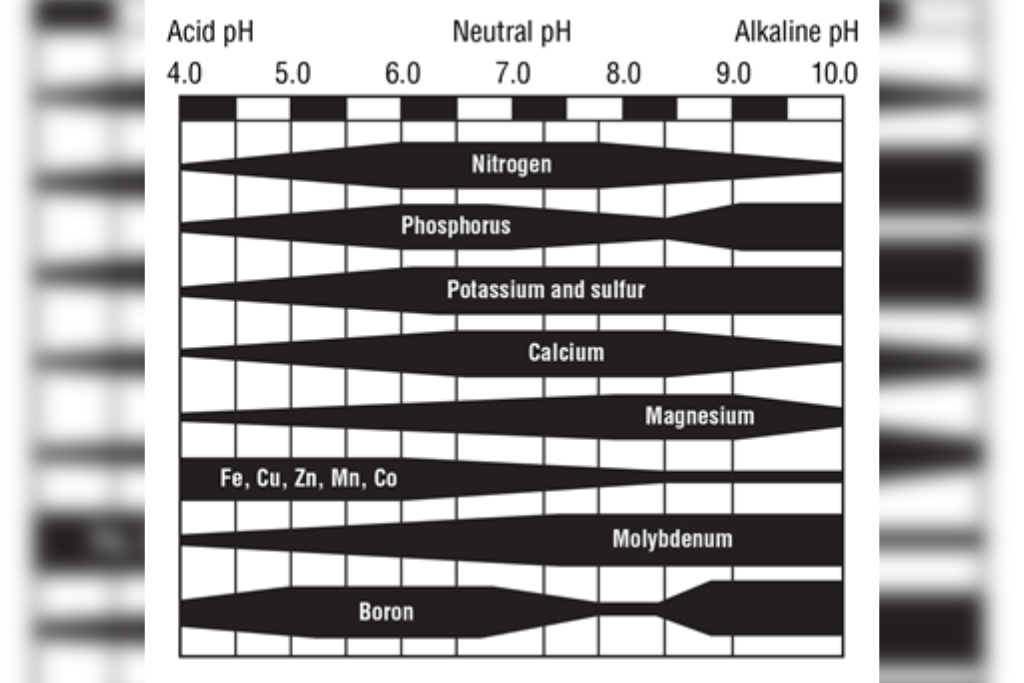
Agricultural lime is commonly used to adjust soil pH levels, which can affect nutrient availability in the soil. When soil pH is too low (i.e., too acidic), essential crop nutrients such as nitrogen, phosphorus, potassium, sulphur, calcium, and magnesium become less available to crops, reducing fertilizer use efficiency.
One argument that is sometimes put forward is that it is cheaper to replace these nutrients or to top them up than it is to lime. But are these nutrients still being used efficiently? The evidence below suggests not. At a pH of 5, for example, only 30% of the phosphate is recovered; raise the pH to 6, and nearly 90% is utilized by the crop. Attempting to make this up with applied P fertilizers would not only be futile but prohibitively expensive.
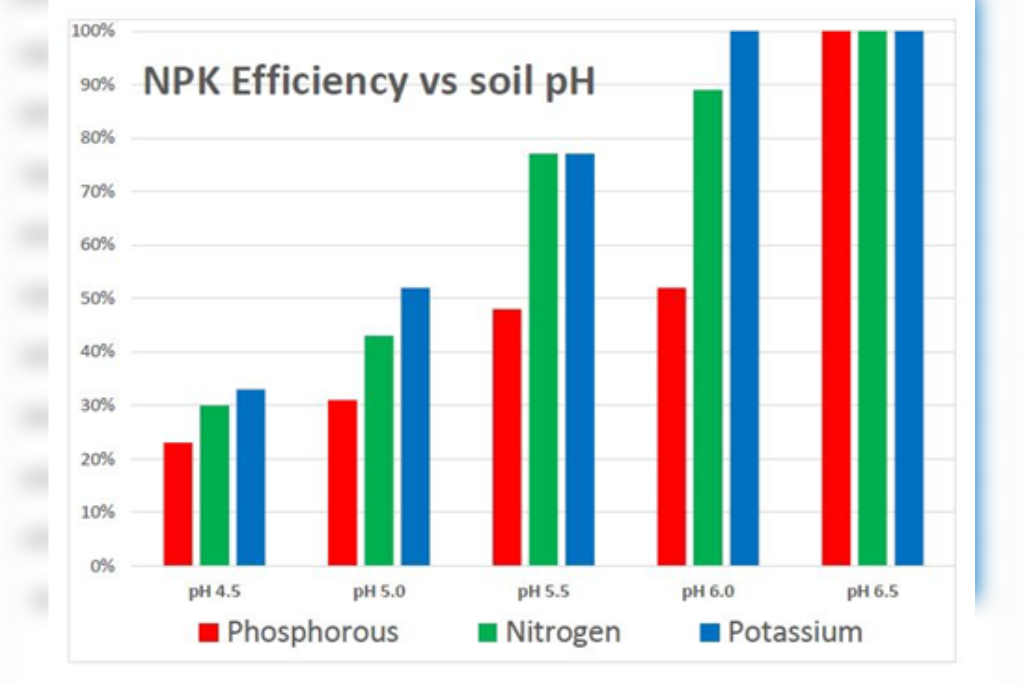
The amount of lime needed depends on the starting pH of your soil and the type of soil. Getting a soil test and a recommendation is the surest way to know what the optimum amount of lime is.
This is a real quandary for many committed no-till growers who are well down the road of building their soil structure and extremely reluctant to undo it by cultivating to incorporate lime. If you want to learn more, some of the comprehensive work to cover this area has been done by the GRDC in Australia and can be found here:
Soil tests provide farmers with information on the nutrient levels in their soil, allowing them to apply the correct amount and type of fertilizer to meet their crop’s needs.
There are several types of fertilizers available, including organic and synthetic options. Organic fertilizers include compost, manure, and plant residues, while synthetic fertilizers are made from chemically synthesized nutrients.
Farmers should consider factors such as cost, availability, and nutrient content when choosing fertilizers. It is also important to apply them at the right time and in the right way as advised in soil analysis recommendations to maximize their effectiveness.
There are different methods of fertilizer application, including broadcasting, banding, and side-dressing. Broadcasting involves spreading fertilizer uniformly over the entire field, while banding involves placing the fertilizer in narrow bands where the seeds will be planted. Side-dressing involves placing the fertilizer in a band beside the crop rows.
It is important to note that over-application of fertilizers and soil amendments can lead to nutrient runoff and contamination of nearby water sources. Farmers should always follow recommended application rates and practices to minimize environmental impact.
A good crop begins with putting the seed in the ground well, into a good growing environment. This means a well-structured soil with plenty of oxygen so that the roots can explore and grow rapidly in length and access as much soil volume as possible. In turn, this allows the growing crop to access more nutrients, more water and anchor itself strongly.
This soil preparation means many things to many farmers, and there is never a single approach for everyone; it depends on soil type, the crop to be grown, the existing soil structure and indeed the equipment available.
Traditionally, disc ploughing has taken place to cultivate the land ready for planting, but is this the best technique and what implications does it have for the growing crop?
One of the issues with disc ploughs is that they create a very hard pan of soil at the depth below the bottom of the disc each year, making it hard – sometimes impossible – for the crop to put its roots through. Because the disc plough works very shallow this severely restricts the volume of soil available, leading the crop to suffer very quickly in a dry period.
It is also very common for the disc plough to leave the surface rough and uneven. This is very bad news for maize in particular, where all of the plants need to emerge on the same day to avoid yield loss from the earlier plants shading the later plants – which are in fact weeds as they contribute far less to yield but still take a disproportionate amount of light and nutrients.
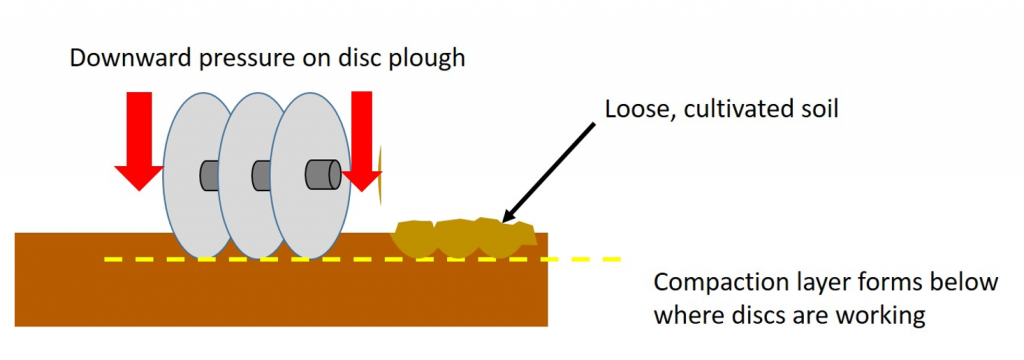
One technique gaining popularity is the chisel plough. This is an implement which uses a series of deeper legs or ‘tines’ to rip the soil. Because this works at a greater depth than a disc plough and is not ‘weighing’ on the soil and smearing a layer at the bottom of a disc, it is very effective at removing compaction and providing an open soil structure.
More importantly, it allows water to infiltrate much quicker, meaning that small amounts of rain go a lot further into the soil to be stored for when the crop needs it.
Chisel ploughs take more power to pull, but vastly improve yields compared to a disc plough. They do leave the soil surface uneven, so a pass with a harrow afterwards is a very good way to prepare the soil for sowing.
Gaining popularity amongst medium and larger scale farmers is a disc and tine combination cultivator. Often referred to as a ‘one-pass’ cultivator this is a misnomer; cultivation and land preparation should take as many passes as needed to create a good seedbed. Sometimes one pass will be sufficient, other times three separate passes may be needed to achieve the desired seedbed.
These cultivators to a great job of deep loosening with the tines, as well as mixing and chopping the clods and trash to give a well-structured, level seedbed. Occasionally they can do too much soil disturbance and they do take a lot of power to pull.
Among some large farms, notill or direct drilling is gaining popularity. Whilst this is a very low-cost method of establishing a crop, as only a single pass with the planter is required, there is a lot of longer-term discipline and preparation to make this work – something we will discuss later this year.
Timing is critical in maize land preparation. Start the process well in advance of the planting season. Clear the land of any existing vegetation, weeds, and debris. The aim is to create a clean slate for your maize crop. This early start ensures that you have adequate time to address any soil issues, such as pH adjustment and nutrient enrichment. Moreover, align your land preparation schedule with local climate and rainfall patterns. Preparing the soil ahead of the rainy season is vital to ensure that the earth is well-moistened and ready for planting when the time comes.
Optimal maize planting requires attention to detail. Begin by planting your maize seeds at a uniform depth, generally around 2 inches. Consistent seed spacing between rows is equally vital. This ensures that each plant has sufficient space to grow and access the necessary nutrients. Overcrowding can lead to fierce competition for resources, ultimately reducing yields. To achieve this, use planting equipment that guarantees even seed placement and spacing, contributing to a successful maize crop.
Well Sown is Half Grown!” is an old saying about the importance of planting the crop well to give it the best chance in life. As we approach planting season it is important to remind ourselves how to get it right, and why we should not rush if the soil and seedbed conditions are not satisfactory. Let’s take a look at why late germination matters to your crop yields, and how to avoid delayed emerging plants. But firstly, the causes of un-even germination:
In one Canadian study over several years, no-till maize took on average 2 days longer to emerge than cultivated soil because of the lower temperatures. This is not a problem – as long as all of the crop emerges at the same time.
Surely all the plants catch up eventually, does it really matter? Yes it does matter. The best research I have seen is from Wisconsin State in the US, where by the way the state record yield in 2017 was an astonishing 19.8 t/ha or 88 bags per acre. Researchers in Wisconsin set up a series of experiments where they planted varying proportions of a crop on time and delayed.
For example, 75% of the plants in one plot were planted on the optimum date, then they came back 1 ½ weeks later and planted the other 25% to mimic later germination. This allowed them to measure the overall effect on yield. The results showed a 6% yield loss. This increased to a 10% yield loss when the 25% of late plants came up 3 weeks later. Just to prove the point, where they planted ALL of the seeds 10 days late in a separate plot to produce an even stand, it was only 5% lower yield than the evenly emerged, early planted crop. Planting well is more important than planting on the perceived ‘optimum’ date.
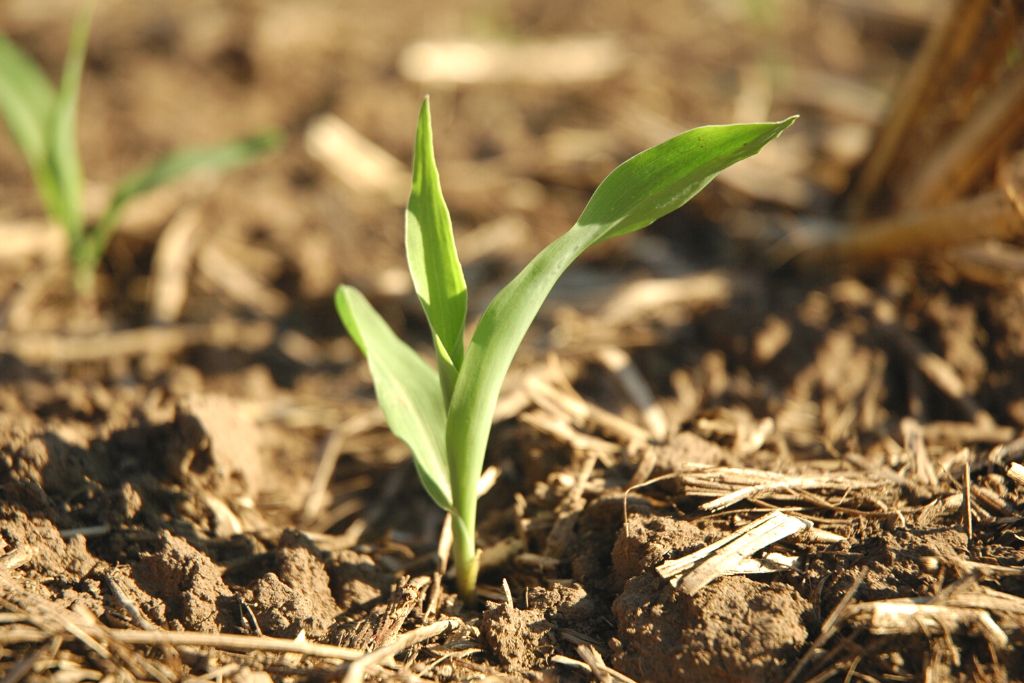
When maize plants emerge at different times within the row, the smaller plants are predisposed to competition from their stronger neighbour for the duration of their lives
The summary of results compared to the ‘perfect’ establishment represented by the black bar on the chart below is a strong visual reminder of the yield cost of poor planting. So, if you have a significant proportion of the crop germinating late over 200 hectares every year from an inaccurate planter, this will easily be costing you 5-10% of your yield. On an 8 t/ha (35 bag/acre) crop this is worth USD 220 per hectare and puts the cost of the planter into perspective.
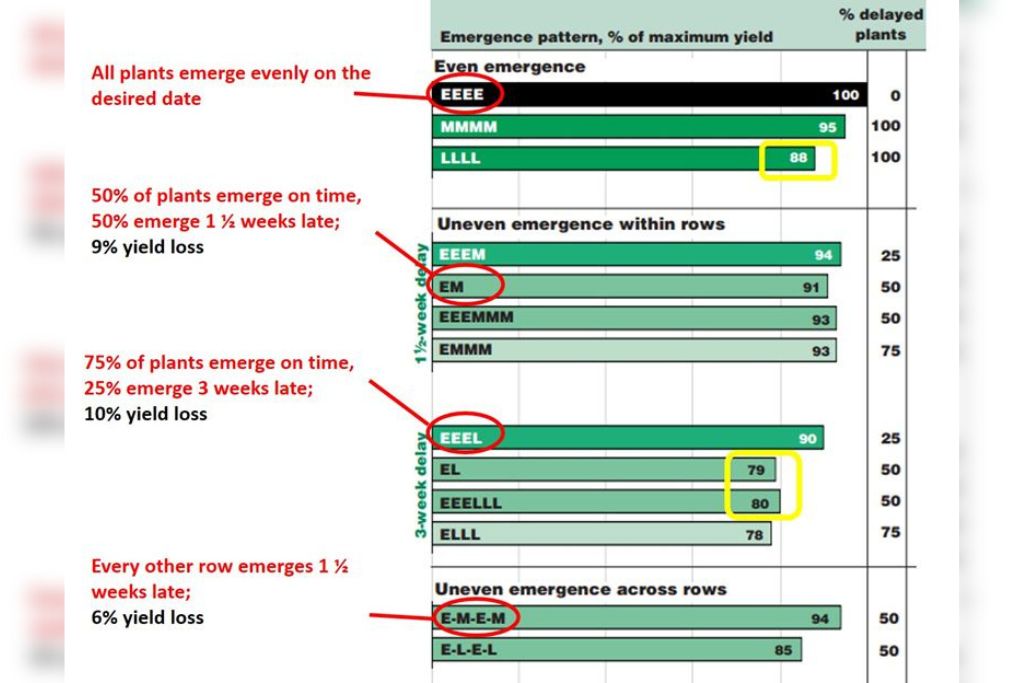
When Should I Consider Replanting an Uneven Crop? That was not the whole story however… Where you have variation between the rows – which is very common when a couple of the units on the planter working too shallow, as pictured below from Pioneer USA – the yield loss is actually much less.
Even when 50% of the rows emerge late the yield loss is actually minimal – less than 5%. This is important guidance when considering replanting. The bigger plants are sufficiently far away from the small plants in this case that the competition is minimal.
If more than a quarter of your plants WITHIN the rows have not emerged within 2 weeks of planting however, you might be better to replant if rain arrives and accept an 88% yield by planting late (the yellow boxes on the graph), rather than a 79-80% yield from a variable plant stand.
Summary Guidelines & Actions On Maize Seed Germination & Emergence
Fertilizers play a crucial role in maize cultivation, but they should be used judiciously. Soil testing guides you in determining the right type and amount of fertilizers to apply. It’s essential to adhere to these recommendations, as over-application can lead to excessive nutrient runoff, harming the environment. Remember that there are different types of fertilizers, including organic and synthetic options. Choose fertilizers based on factors like cost, nutrient content, and availability. Applying them at the recommended times and in the recommended ways, as indicated in soil analysis, will ensure that your maize crop benefits fully from these amendments.
Over-tilling the soil can have detrimental consequences, including soil erosion and the loss of valuable topsoil. Consider reduced tillage or even no-till farming practices to improve soil structure, conserve moisture, and minimize erosion. These practices also enhance the soil’s organic matter content. Cover crops, such as legumes or grasses, can help protect the soil from erosion and enhance its health. By adopting these measures, you’ll contribute to the sustainability and long-term fertility of your land.
Crop rotation is a smart strategy for maize cultivation. It helps reduce disease pressure and improves soil fertility by diversifying the types of crops grown on the same land. Planting maize year after year in the same field can lead to soil degradation. Cover crops, such as legumes or grasses, enrich the soil with nutrients and organic matter. They also help control weeds and reduce erosion. By incorporating crop rotation and cover crops into your land preparation process, you’ll foster a healthier and more productive farming environment.
In the world of agriculture, where success is measured not only in crops but in the livelihoods of farmers and the sustenance of communities, proper land preparation is the cornerstone of prosperity. Maize, a vital crop for many regions, holds the promise of abundant yields and a bountiful harvest when its environment is nurtured with care.
This article has unveiled the essential stages of maize land preparation, starting from the critical soil analysis and examination of factors like soil type, topography, climate, and water availability. Each of these aspects plays a pivotal role in the journey toward a flourishing maize crop.
From understanding the soil’s properties to sculpting the land to create an ideal environment, every action influences the success of your maize cultivation. The quality of your soil, the contour of your fields, the influence of your local climate, and the gift of water determine the fate of your maize crop.
As the soil is tested and amendments are made, as seeds find their place in the earth, and as the green shoots of a new season emerge, we are reminded of the profound interconnectedness of farming. Maize land preparation is not a solitary act but a symphony of elements working together to compose a song of growth and abundance.
To our dedicated farmers, we extend a call to action. The roadmap to a productive maize harvest has been laid before you. Start with meticulous soil testing and analysis, heed the guidance of your local climate, and harness the power of water in your fields. Your maize crop’s success begins with you, and your commitment to these best practices will undoubtedly yield rewards.
Order our services and get to know how to improve your soil for better yeilds.